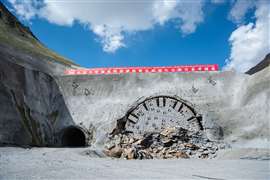Crane group questions +25% load chart tests
30 September 2008
The Construction Plant-hire Association (CPA) highlighted issues affecting mobile cranes at its September meeting in the UK.
Concerns have been raised over the conventional four-yearly tests, which see mobile cranes lifting 25% over their load charts. At the meeting of the Crane Interest Group (CIG), a division of the CPA, it was suggested that the principle could be changed to incorporate a more elaborate examination of the crane, with smaller lift tests. Some manufacturers argue that lifting 25% above the load chart puts unnecessary strain on the crane structure.
Under the Operations and Lifting Equipment Regulations 1998 (LOLER) there are no specified requirements for test lifts. They are left to the discretion of the designated examiner of the machine. However, the four yearly 25% above rate card test, which was a requirement before LOLER, is still commonplace and an expectation of most worksites, says Colin Wood, CPA chief executive.
"Cranes are not so much built for structural strength any more but are built for stability," Wood added. A CIG sub-group is to be set up to discuss the matter and will report its findings at the next meeting.
Another topic under discussion at the meeting was loader cranes. Their increased capacity and flexibility has seen them being used for wider applications, including those traditionally only carried out by mobile cranes. As a result the group is working on a revision of Part 4 of the 1997 British Standard Code of Practice for the Safe Use of Cranes, BS 7121. "They [loader cranes] have moved on a massive amount over the 11 years and under the revision they will be treated exactly like mobile cranes," explained Wood.
CIG has also set it sights on the European Working Time Directive. A proposed revision to the directive is now working its way through the European Parliament to reduce the average number of hours that an operator should work each week. It currently stands at 78 hours a week but, under the proposals, that would be reduced to 60 hours.
Wood commented that 12 hour days are not uncommon for crane operators in the summer months and, for example, during petrochemical plant shutdowns, when lifting work needs to be carried out as soon as possible. Some employers argue, however, that the change would leave them searching for additional operators. Again, CIG is looking into the issue and will report its findings at the next meeting.






